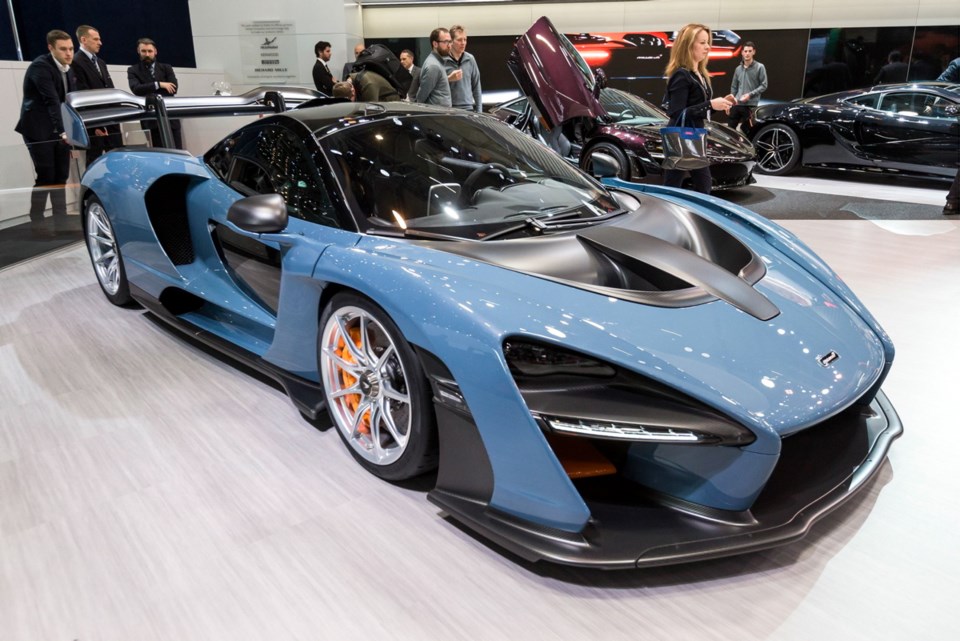GENEVA — This year’s Geneva auto show is full of new cars flaunting electric and autonomous technologies meant to help unclog city streets and fight global warming and air pollution.
That didn’t stop carmakers from offering their traditional crowd-pleasers: ostentatious displays of overweening horsepower in sleek, gas-guzzling and obscenely expensive sports cars.
The contrast isn’t unusual when it comes to auto shows, but it was particularly striking this year, as automakers push to get ahead of expected shifts toward electric and autonomous vehicles — while high-end cars remain a profitable business.
French automaker Renault unveiled its futuristic and funky EZ-Go, a six-seat self-driving electric vehicle that aims to bridge public and private transportation needs, with options such as on-demand pickup, similar to a taxi. It features a rooftop opening that allows passengers to enter by a ramp for easy access.
Renault chief operating officer Thierry Bollore called it an “urban, ‘robo-vehicle’ electric concept that can be tailored for public and private services.”
Mercedes-Benz rolled out its EQA concept car, a compact battery electric vehicle with a virtual radiator that changes appearance depending on the selected driving program.
Volkswagen showed off its I.D. Vizzion large electric sedan, shown in an autonomous version without a steering wheel, calling it a “smart device on wheels.”
Companies have invested billions in electric cars to position themselves for a future tipping point in which longer battery range, more places to charge and falling costs make electrics more attractive than conventional vehicles.
Driverless cars, meanwhile, remain in the testing phase. Analysts at IHS Market forecast that autonomous cars will have their first year of significant volume sales in 2021.
To explain their appeal, BMW CEO Harald Krueger used the example of a Chinese customer who currently spends 30 days out of the year sitting in traffic jams. “If I can give him as a gift 28 days through autonomous driving, so that he can take a break, listen to music or maybe look after email, then that is a comfort factor that the customer will want to have,” he told journalists.
Internal combustion engines and cars offering an exciting experience for real human drivers remained very much in evidence, however.
Luxury sports car maker McLaren showed off its 340-kilometres-per-hour Senna, named after racing driver Ayrton Senna. The car is styled similar to a race car with prominent intakes and a rear spoiler. The production run of 500 is sold out at the factory, at a starting price at about $1 million.
Ferrari offered the curvaceous 488 Pista, whose 710-horsepower engine, fed by large rear air intakes, has been fine tuned to emit a “unique and unmistakable” roar as the car accelerates.
The show opened to journalists on Tuesday and Wednesday. It opened to the public on Thursday and runs through March 18.



